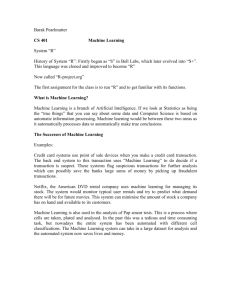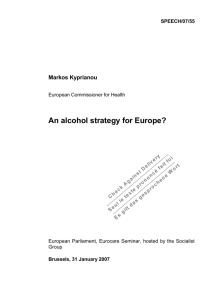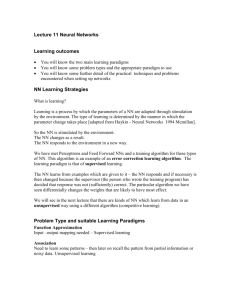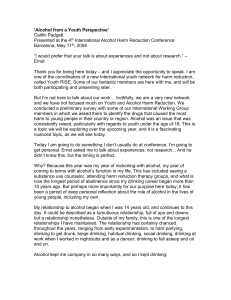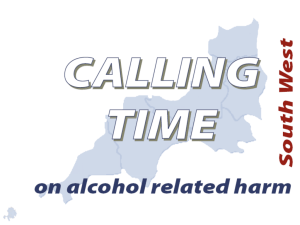STAMPP Induction June 2012
advertisement
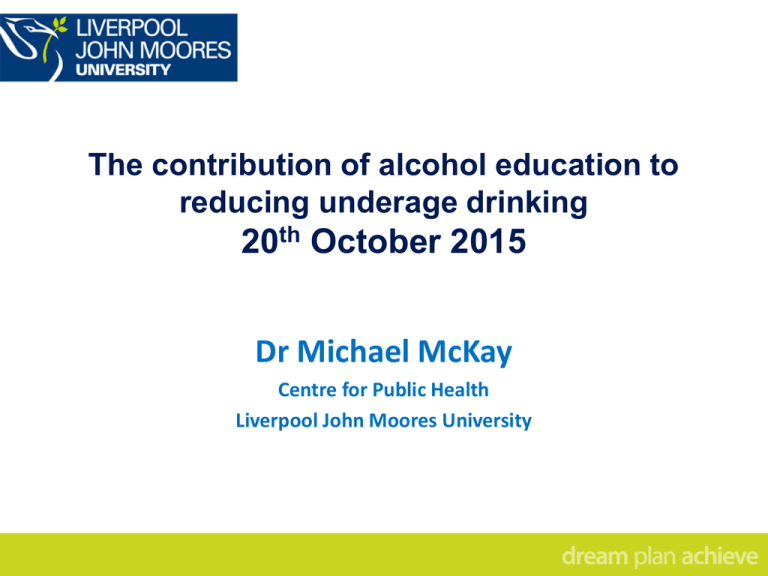
The contribution of alcohol education to reducing underage drinking 20th October 2015 Dr Michael McKay Centre for Public Health Liverpool John Moores University What is SHAHRP? The School Health and Alcohol Harm Reduction Project (SHAHRP) is an example of a harm reduction education intervention which combines a harm reduction philosophy with skills training, education, and activities designed to encourage positive behavioural change It is a curriculum-based programme with an explicit harm reduction goal and is conducted in two phases over a two year period. McBride et al., (2004) Harm minimization in school drug education: final results of the School Health and Alcohol Harm Reduction Project (SHAHRP). Addiction, 99, 278-291 Student Workbooks Workbook 1 Workbook 2 Results Problems included: • Clustering at school level (hierarchical nature of data) • Non-randomised nature of the “trial” Knowledge 16 Knowledge Score 14 Class 1 Class 2 Class 3 Class 4 12 10 8 6 1 2 Assessment point 3 4 Attitudes 22.5 Class 1 Class 2 Class 3 22.0 Attitudes Score 21.5 21.0 20.5 20.0 19.5 19.0 18.5 1 2 Assessment point 3 4 Own harm 25 Class 1 Class 2 Class 3 Class 4 Own harm score 20 15 10 5 0 1 2 Assessment point 3 4 Else harm 10 Class 1 Class 2 Class 3 Class 4 Else harm score 8 6 4 2 0 1 2 Assessment point 3 4 Last drinking episode 16 Class Class Class Class 14 1 2 3 4 Number of drinks 12 10 8 6 4 2 0 1 2 Assessment point 3 4 Knowledge Safer Attitudes Alcohol Consumption Harms McBride et al., 2004; McKay et al., 2012; Midford et al., 2014 Subgroup Analyses • Baseline Drinking Behaviour (McBride et al., 2003) • Abstainers • Supervised Drinkers • Unsupervised Drinkers Significantly more influenced by the intervention Findings • Greater Alcohol-related Knowledge Regardless of Baseline Drinking Behaviour • Safer Attitudes toward Alcohol Findings Consistently observed in the Unsupervised Drinkers group only • Lower Quantity of Alcohol Consumption • Reduced Frequency of Alcohol Consumption • Fewer self-reported Alcohol-Related Harms from both their own and other peoples’ alcohol consumption Quantity of Alcohol Consumption Frequency of Alcohol Consumption Own Harm Else Harm T1 T2 T3 T1 T2 T3 T1 T2 T3 T1 T2 T3 Abstainer (T) ✓ *** x x ✓ ** x x ✓ ** x x x x x Abstainer (E) x x x x x x x x x x x x Supervised (T) x x x x x x x ✓ ** x x x x Supervised (E) x x x x x x x x x x x x Unsupervised (T) x x ✓ * ✓ ** x ✓ ** ✓ *** ✓ ✓ ** x ** ✓ *** ✓ ** ✓ * x x ✓ * x ✓ * ✓ * ✓ * ✓ * ✓ * Unsupervised (E) *p<0.05 x **p<0.01 x ***p<0.001 Quantity of Alcohol Consumption 6% 21% 10% -2% Alcohol-related harms from own drinking -13% 14% -8% 18% Alcohol-related harms from else drinking -9% -28% -8% -33% Unsupervised Drinkers • Higher Risk Group (Bellis et al., 2010) • SHAHRP lessons focused on alcohol use experiences in unsupervised contexts Development of drinking behaviours 26 16 13 My data n=1066 Proportions at age 13 19% 35% Abstainer Supervised Unsupervised 35% 11% Both My data n=1066 Proportions at age 16 5% 14% 6% Abstainer Supervised Unsupervised 75% Both My data n=1066 Typical use - units of alcohol age 13 and age 16 12 7.7 7.3 6.2 2.5 1.8 0 Abstainer Supervised Unsupervised Both My data n=1066 Own Harms at age 13 and age 16 17.4 11.7 11.3 0 Abstainer 11.8 1.4 1.3 Supervised Unsupervised Both Frequency of drinking Drinking Frequency at age 16 Typical consumption Typical sessional drinking age 16 - units of alcohol S U B Attitudes Aggression Harms Alcohol related harms at age 16 S U B Attitudes Aggression Thank You Michael McKay M.T.McKay@ljmu.ac.uk
